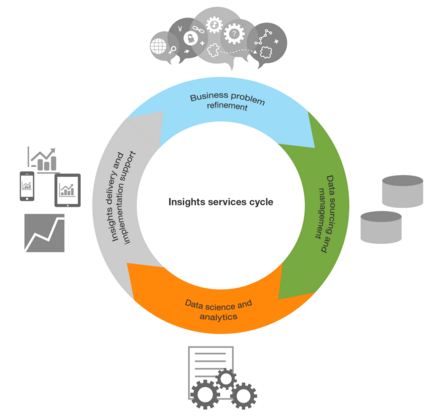Introducing The New Insights Service Provider
 Do you ever feel like you’re facing a moving target? Whether it’s the latest customer requirements, or how to improve operations, or to retain your best employees, or to price your products, the context in which you are doing business is increasingly dynamic. And, so are the tools you need to better understand that context? Everyone is talking about the promise of big data and advanced analytics, but we all know that companies struggle to reach the Holy Grail.
Do you ever feel like you’re facing a moving target? Whether it’s the latest customer requirements, or how to improve operations, or to retain your best employees, or to price your products, the context in which you are doing business is increasingly dynamic. And, so are the tools you need to better understand that context? Everyone is talking about the promise of big data and advanced analytics, but we all know that companies struggle to reach the Holy Grail.
Data and analytics tools and the skills required to use them are changing faster than ever. Technologies that were university research projects just last year are now part of a wide range of products and services. How can firms keep up with the accelerated pace of innovation? Alas, many cannot. According to Forrester's Q3 2015 Global State Of Strategic Planning, Enterprise Architecture, And PMO Online Survey, 73% of companies understand the business value of data and aspire to be data-driven but just 29% confirm that they are actually turning data into action. Many firms report having mature data management, governance, and analytics practices, but yesterday's skills are not necessarily what they will need tomorrow — or even today.
The same goes for data sources. We all know that using external data sources enhances the insights from our business intelligence. But which data and where to get it?
 My new report “Insights Services Disrupt The Data And Analytics Market: New Services Improve Access To Insights But Cannibalize Traditional Markets” introduces a new services offering that helps accelerate the time-to-value of these new technologies. You don't need wait to build out your own platform, or chase scarce data science talent. Insights services providers combine business knowledge, analytics and data science expertise, and technology skills to help their customers throughout the “insights services cycle.”
My new report “Insights Services Disrupt The Data And Analytics Market: New Services Improve Access To Insights But Cannibalize Traditional Markets” introduces a new services offering that helps accelerate the time-to-value of these new technologies. You don't need wait to build out your own platform, or chase scarce data science talent. Insights services providers combine business knowledge, analytics and data science expertise, and technology skills to help their customers throughout the “insights services cycle.”
That cycle starts with defining or refining the business problem. Which questions are you looking to answer? Sometimes you might not even know how to formulate the question. Then once you’ve got a defined problem, an insights provider will help to identify the data that can be brought to bear – both from internal and external sources. Insights providers will know what data is out there and where to get it, but might also have used it before and might have negotiated a better price with the data originator or broker. Next come the data science and analytics: defining or customizing the algorithm and performing the analytics. And, finally, the service provider will deliver the insights and accompany their customers in the implementation of the specific actions required for their business. That’s the insights services cycle.
And, there are a growing number of firms offering insights services – from traditional software vendors, systems integrators, business consulting firms, and new players with specific functional or industry expertise. My next report will be a landscape of these vendors. Stay tuned.